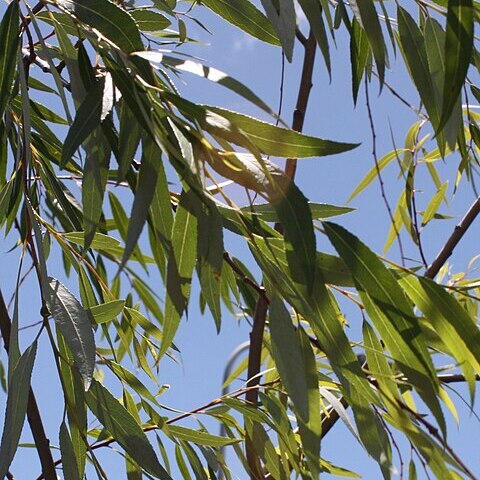A bushy tree. It loses its leaves during the year. It grows 2-10 m high. It has many branches that can be spreading or hang down. The woody stems are dark brown and have furrows along them. The leaves are alternate and 11-15 cm long by 2-4 cm wide. They are narrowly oval. The flowers are in spikes. The sexes are separate on different trees. The fruit is a capsule. It splits along its length releasing seeds in tufts that blow in the wind.
Monoecious shrub or small tree, up to 12 m tall, with rough, scaly bark, branches sometimes drooping. Leaves lanceolate, silvery hairy, finely toothed, paler beneath. Flowers in spikes on axillary shoots; seeds woolly.
Monoecious shrub or small tree to 12 m, with rough, scaly bark, branches sometimes drooping. Leaves lanceolate, silvery hairy, finely toothed, paler beneath. Flowers in spikes on axillary shoots; seeds woolly.

